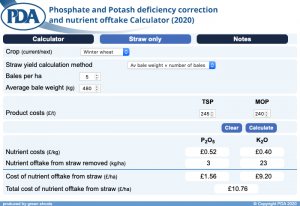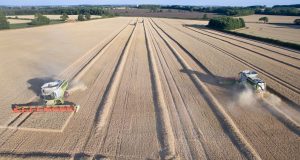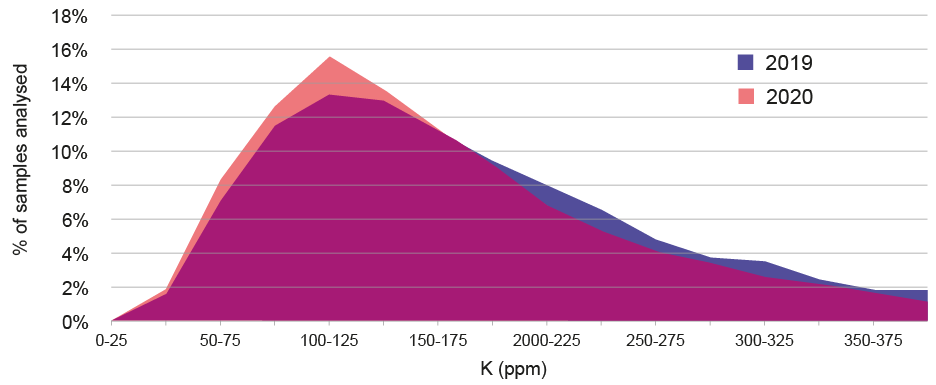Download pdf: Potassium and pest pressure (1.97M)
pdf 1.97M
Potassium and pest pressure
October 2020
Barley yellow dwarf virus is the most economically important virus in UK cereals, with severe infections causing losses of up to 60% in winter wheat and 50% in winter barley. Although this is rare, significant economic damage can occur from small populations of aphids carrying the virus. The effects of BYDV can also be exacerbated by the presence of additional stress factors, including adverse weather, soil acidity and other pests or diseases.
Turnip yellows virus is the most important viral disease of oilseed rape in the UK, decreasing yields by up to 26%, whilst also knocking oil production.
Virus Yellows, including beet mild yellowing virus, beet chlorosis virus and beet yellows are a complex of particularly damaging viruses that can cause yield losses of up to 50 % when infection occurs early in the season. Infection reduces the photosynthetic area of leaves reducing both yield and sugar content.
All of these viral diseases are transmitted by aphids. As well as potentially transmitting viruses, aphids can also cause wilting, distortion, or stunting of plant shoots.
The role of potassium in mitigating crop damage due to insects is complex. Potassium plays an important physiological role including build-up of resistance to insect pests. Adequate amounts of K have been reported to decrease the incidence of insect damage considerably. Plants well supplied with nitrogen and insufficient potassium have soft tissue with little resistance to sucking and chewing pests.
Adequate levels of potassium in plants leads to a reduction in carbohydrate accumulation, lowering the likelihood of attracting insect pests, whilst the tissue yellowing symptoms of potassium deficiency acts as a signal to attract aphids.
A sufficient potassium supply tends to harden plant structures, strengthening cell walls, leading to thicker and harder stems and leaves. This hardening of plant structures improves mechanical resistance to feeding of insects especially sucking insects such as aphids.
The table below shows the correlation between potassium treatments and aphid pressure in OSR.
Impact of potassium on population build-up of aphid and crop yield in Brassica napus
| Potassium treatment (kg/ha) |
Aphid population / Plant | Yield (t/ha) |
| Control | 13.70a | 2.56c |
| 60 | 8.46b | 3.02b |
| 80 | 7.63b | 3.12b |
| 100 | 4.63b | 3.50a |
| 120 | 4.30b | 3.56a |
| LSD | 4.60 | 0.30 |
| Ref: Sarwar, Muhammad & Ahmad, Nazir & Tofique, Muhammad. (2011) Journal of Zoology | ||
Potassium also has a negative impact on the growth and development of sucking pests. Higher plant potassium levels resulted in a decline in occurrence, population levels, rate of population increase and net reproductive rate of aphids.
The area of winter cereals planned for this autumn is predicted to be much higher than normal, with a large proportion potentially following a spring cereal due to the enforced changes to rotations from last year’s challenging conditions. On top of this, there is already high aphid pressure being reported on volunteers and an increased likelihood of at least some early drilling due to the memory of 2020, so BYDV could potentially be an issue this year. Anything that can help lessen the impact, to reduce the pressure on chemical control has to be worth considering.
Straw
Straw has always been an important by-product of cereal production, whether used as feed or bedding for livestock or sold off farm for electricity generation. As with any decision in farming, there are pros and cons to both removing or incorporating straw.
The incorporation of straw helps to add organic matter back, improving soil structure over time, whilst returning the nutrients contained within the straw back to the areas of the field that they came from; however, it can also potentially increase the slug pressure, especially in wet seasons and increases combine fuel consumption as a direct result of chopping. On the other side, the sale of straw can improve a crops income, or exchanging straw for muck can improve soil fertility and build organic matter whilst improving establishment of the following crop, although generally not evenly distributed over the same fields or area the straw was removed from. Baling can also cause delays to following operations and potentially damage soil structure.
Incorporating straw |
|
| Benefits | Disadvantages |
| Adds organic matter Helps to improve soil structure Returns nutrients evenly across field Reduces nitrogen losses in autumn |
Higher diesel consumption Potential increase in slug pressure May reduce available nitrogen for following crop |
Removal of straw |
|
| Benefits | Disadvantages |
| Additional crop revenue opportunity Improved establishment for following crop Reduces slug pressure |
Additional cost of baling Nutrients removed from field Potential delays in following operations Potential soil structure damage |
To look at the financial implications of removing straw from a nutrient perspective, an estimate of the nutrient content of straw must be available. This can usefully be calculated on a per hectare basis using typical removal values per tonne, based on either crop or straw yield (where it is known). Analysis shows that the nutrient content of spring cereal straw is higher than of winter straw, and that the potash content of straw is much higher than the phosphate content.
The PDA calculator has been updated this year to include a standalone straw calculation. This allows users to easily calculate the quantity of nutrients removed from a field as a result of baling straw. A financial calculation can also be made to quickly see the economic impact of selling or removing straw at harvest. For ease of use, the method of calculating straw removal can be chosen by either using the harvest index from the yield of grain; a known yield of straw or through a calculation based on the average bale numbers and bale weights.
For more information on the calculator visit www.pda.org.uk/pda-app/. The Apple and Android apps will be updated on the relevant app stores shortly.
This calculator is aimed to be used as a guide, with values based average data, but the actual values for specific crops may vary. For example, the potash (but not the phosphate) contained in the straw may be reduced if there is appreciably more rain than average between the onset of senescence and baling. The opposite is true if it has been particularly dry, as was seen in summer 2018 following the long dry spell leading up to and during harvest. The lack of rainfall reduced the usual leaching of potash that often occurs following senescence as stem walls crack open, resulting in much higher levels of potassium in straw than typical.
For more accurate measurements of nutrient content of straw, samples should be sent to the laboratory for analysis.
The mobility of a nutrient within the soil is closely related to the chemical properties of the soil, such as Cation Exchange Capacity (CEC), as well as the soil conditions, including moisture. When there is sufficient soil moisture for leaching to occur, dissolved nutrients can be carried away with the water in drainage and lost from the soil profile. Nutrients that are leached more readily are usually those that are less strongly held in the soil on clay particles or organic matter. In general, anions (borate, sulphate, nitrate) leach more easily than cations (Potassium, Magnesium, Calcium), although phosphate is an exception to this.
Example comparison of nutrient mobility in soils
Very Mobile |
Mobile | Slightly Mobile | Immobile |
| Boron | Nitrogen (Nitrate) Sulphur Manganese Chlorine |
Potassium Calcium Molybdenum Cobalt Nickel |
Nitrogen (Ammonium) Phosphorus Magnesium Copper Iron Zinc |
Samples recorded by Lancrop Laboratories in 2020 show some significant shift from the higher indices in 2019 (2+ and above), to the lower indices in in both soil and tissue K levels across arable and grassland.
There was an increase of over 6% at or below the target of 2- in 2020 compared with the previous year. A third of soils also continue to be analysed below the target index for potassium; where yield and quality penalties can be expected. With such extreme conditions during the spring becoming more of the norm, deficits in nutrient levels are even more likely to be exposed.
Whilst it is a requirement of the Farming Rules for Water to have a soil test that is no more than 5 years old at the time of making a fertiliser or manure application; it is also good agricultural practice and the key starting point for planning fertiliser applications.




